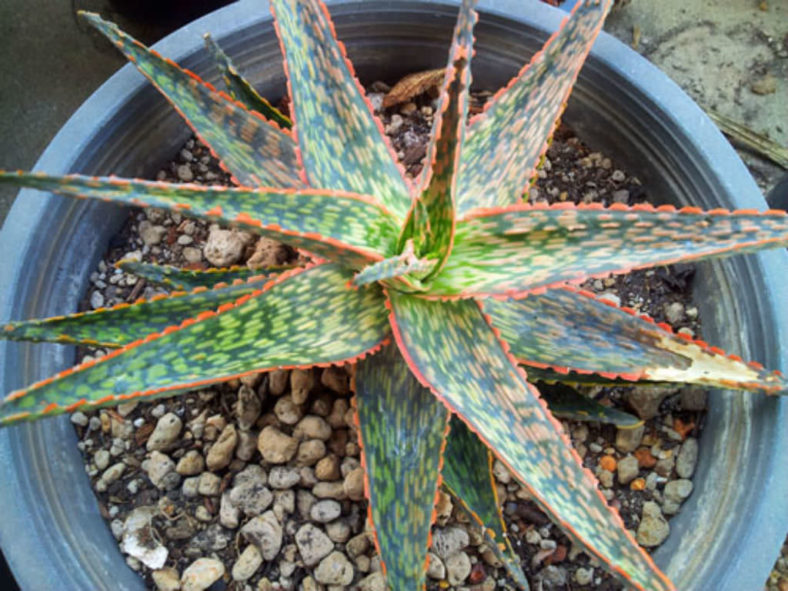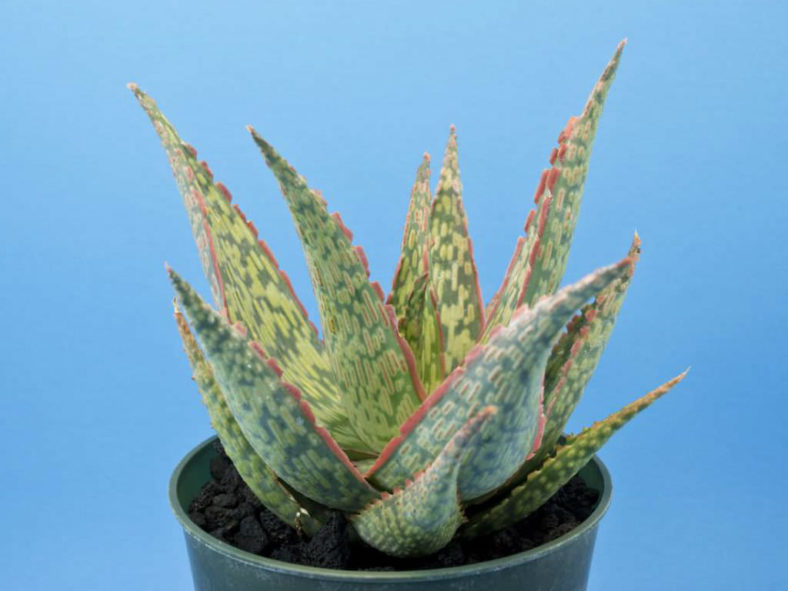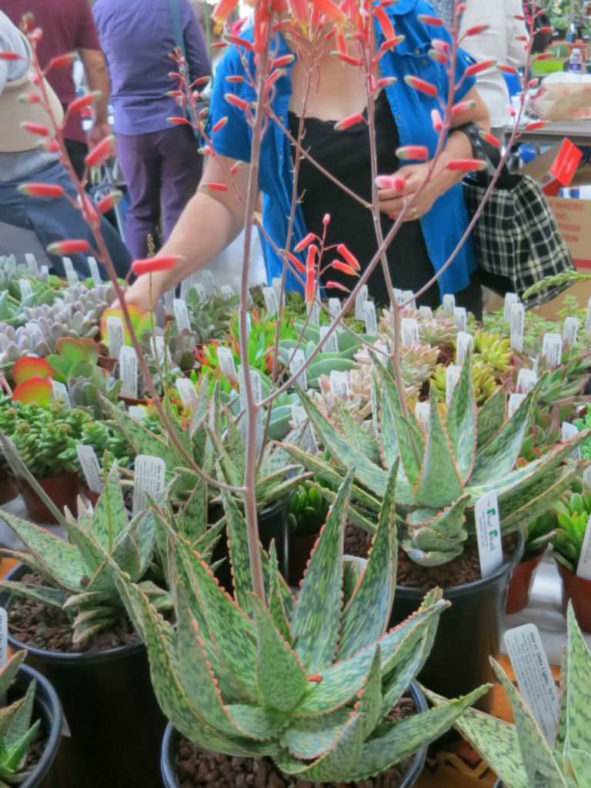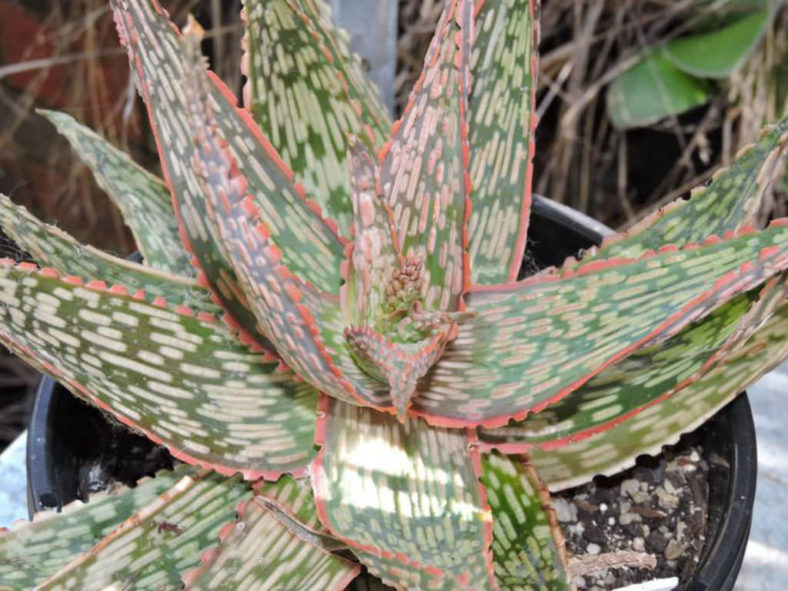Scientific Name
Aloe 'Peppermint'
Common Name(s)
Peppermint Aloe
Scientific Classification
Family: Asphodelaceae
Subfamily: Asphodeloideae
Genus: Aloe
Origin
Aloe 'Peppermint' is one of the Kelly Griffin hybrids. It results from the crossing of several species over several generations.
Description
Aloe 'Peppermint' is an attractive small succulent that forms a cluster of rosettes of stiff triangular mid-green leaves covered with raised pale green, nearly white longitudinal dashes, and bright orange margins. The rosettes can reach up to 1 foot (30 cm) in height and diameter.
The flowers are orange and appear in branched inflorescences in winter.

How to Grow and Care for Aloe 'Peppermint'
Light: When growing Aloes indoors, place your plants in a southern or southwest-facing window with plenty of bright, indirect light. Outdoors provide light shade, especially during the hottest parts of the day.
Soil: Plant Aloes in well-drained soil specially formulated for cacti and other succulents, or make your soil mix. Drainage is essential because too much moisture around roots can cause root rot.
Hardiness: Aloe 'Peppermint' can withstand temperatures as low as 25 to 50 °F (-3.9 to 10 °C), USDA hardiness zones 9b to 11b.
Watering: These succulents need regular watering but are very tolerant of drought conditions for short periods. Water deeply, but only when the soil is dry. Cut back on watering during the winter months.
Fertilizing: Aloes generally do not require fertilizer but may benefit from the extra nutrients.
Repotting: These plants are not particularly fast-growing and will only rarely need repotting. Repot them in the spring in a container a few inches larger in diameter every few years to keep them from becoming rootbound.
Propagation: Propagating Aloe can be done by offsets, cuttings, or seeds from a mature plant.
Learn more at How to Grow and Care for Aloe.
Toxicity of Aloe 'Peppermint'
Aloe 'Peppermint' is not listed as toxic for people and pets.
Links
- Back to genus Aloe
- Succupedia: Browse succulents by Scientific Name, Common Name, Genus, Family, USDA Hardiness Zone, Origin, or cacti by Genus
Photo Gallery
Click on a photo to see a larger version.


